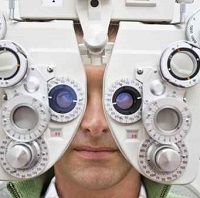AIDS Increases Risk for Age-Related Macular Degeneration
Study results indicate that patients with AIDS appear to have a four times greater risk of developing intermediate-stage age-related macular degeneration when compared with patients of the same age without HIV.

Study results published in the American Journal of Ophthalmology indicate that patients with AIDS appear to have a four times greater risk of developing intermediate-stage age-related macular degeneration (AMD) when compared with patients of the same age without HIV. Dubbed the Longitudinal Study of the Ocular Complications of AIDS (LSOCA), the study was recently presented at the 2015 Association for Research in Vision and Ophthalmology annual meeting in Denver, CO, and was led by the National Eye Institute-funded Studies of the Ocular Complications of AIDS Research Group.
“With HIV and AIDS patients living longer than ever before, they are at an increased risk of developing several age-related diseases at an earlier age than HIV-uninfected people, including cardiovascular disease and diabetes,” said lead author Douglas A. Jabs, MD, MBA, Professor of Ophthalmology and Medicine at the Icahn School of Medicine at Mount Sinai. “Their increased risk for age-related diseases in general led us to analyze how these patients are impacted by one of the most common age-related eye diseases, macular degeneration.”
To evaluate the prevalence of intermediate-stage AMD in patients with AIDS, Jabs and colleagues enrolled more than 1,800 patients with AIDS and no ocular opportunistic infections aged 13 to 73 at 19 locations in the United States between 1998 and 2011. AMD was determined from enrollment retinal photographs by graders at a centralized reading center who were masked to clinical data, using the Age-Related Eye Disease Study grading system. These photographs were compared with published data on an HIV-uninfected, age-matched population from the Beaver Dam Offspring Study, which also graded retinal photographs for AMD features.
The research team found that nearly 10% of participants with AIDS had intermediate-stage AMD. After adjusting for any age differences, the prevalence of AMD was about four-fold greater in those with AIDS than in uninfected participants of the Beaver Dam Offspring Study.
The prevalence of AMD ranged from 4.0% for participants aged 30 to 39 to 24.3% for those aged 60 and older. Risk factors for AMD included aged, with an odds ratio (OR) of 1.9 for every decade of age. Other risk factors included the HIV risk groups of injection drug use (OR, 2.4) or heterosexual contact (OR, 1.9).
Jabs and colleagues also found that the increased prevalence of AMD in patients with AIDS was not related to any specific drug or drug class used to treat HIV infection but rather to the fact that antiretroviral-treated, immune-restored, HIV-infected patients are immunocompromised and, on average, have immunologic changes similar to those seen in uninfected patients older than 70.
“Although the underlying mechanism leading to this increase in AMD in persons with AIDS is not yet known, it may relate to the state of chronic immune activation and systemic inflammation seen in these patients,” said Jabs.
2 Commerce Drive
Cranbury, NJ 08512
All rights reserved.